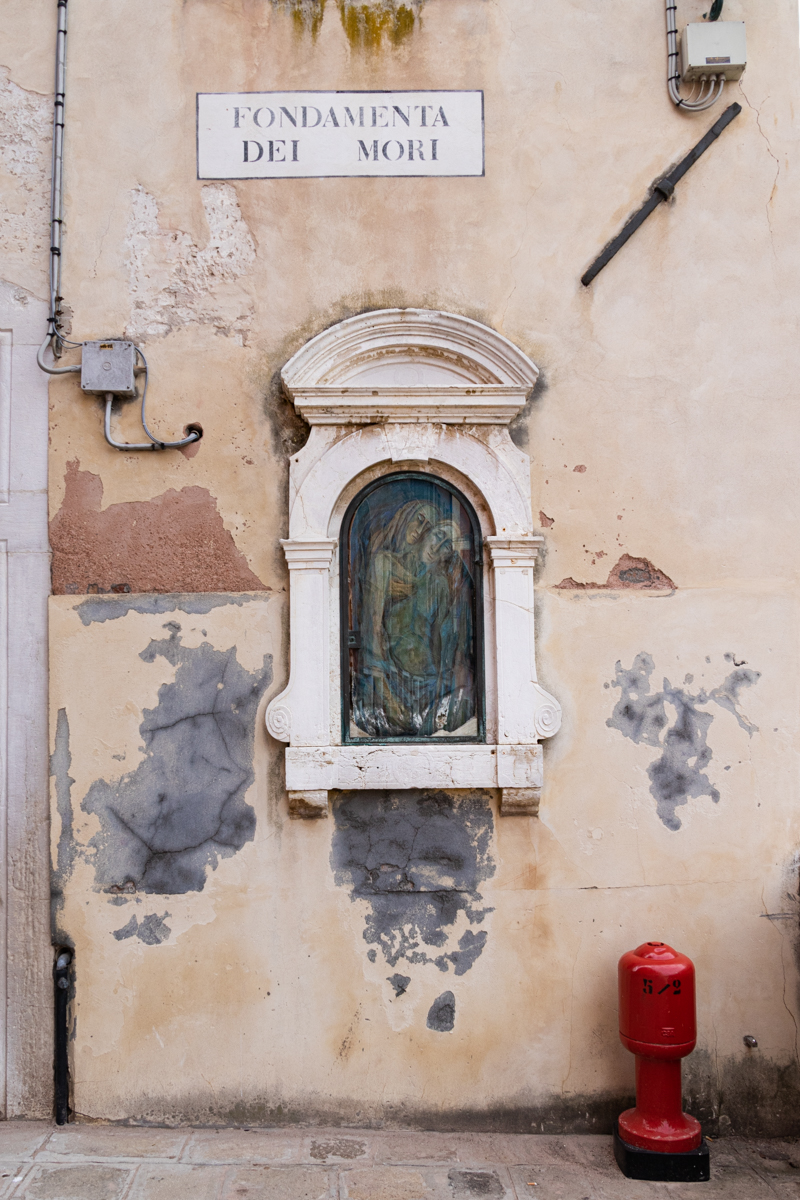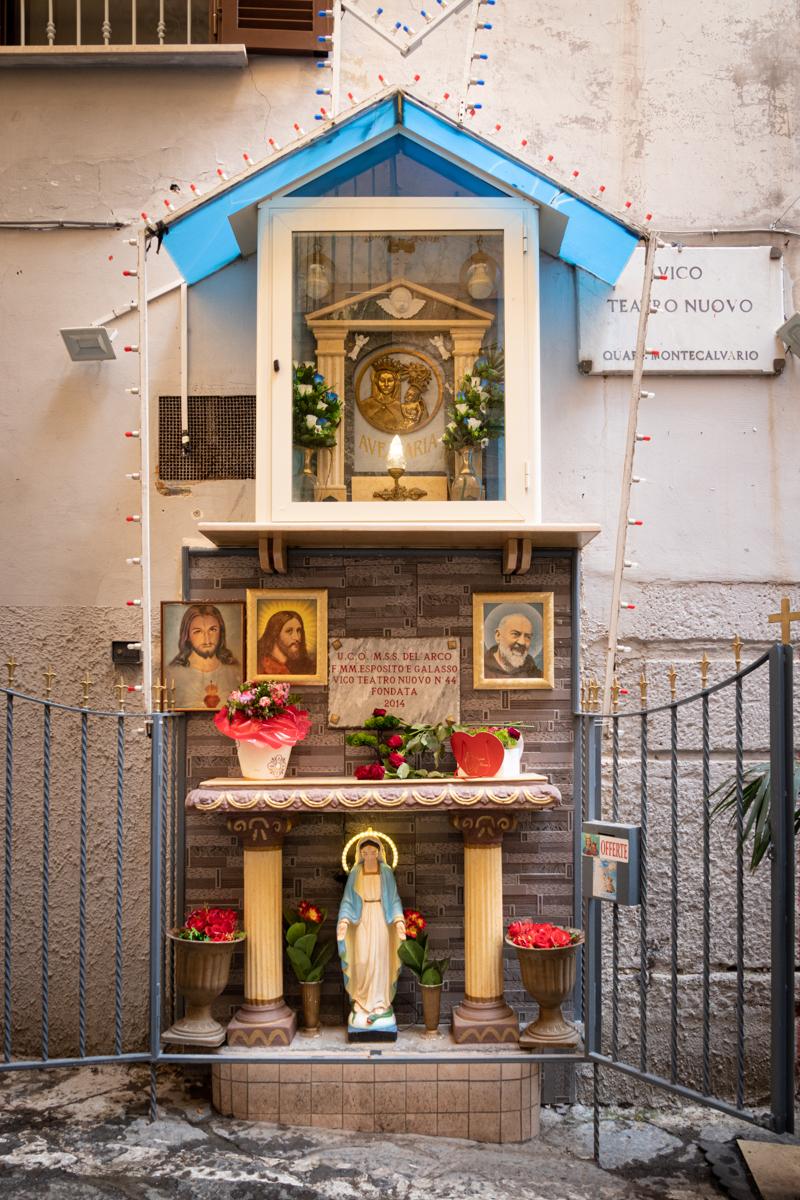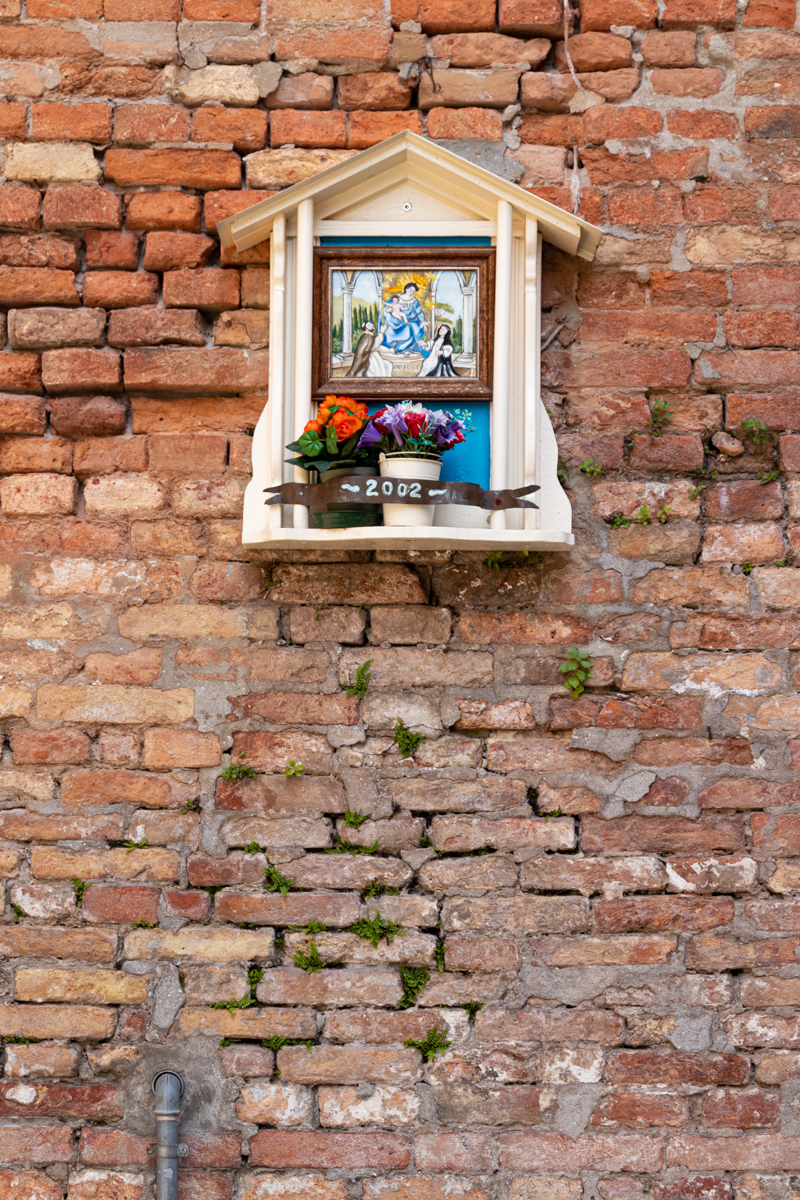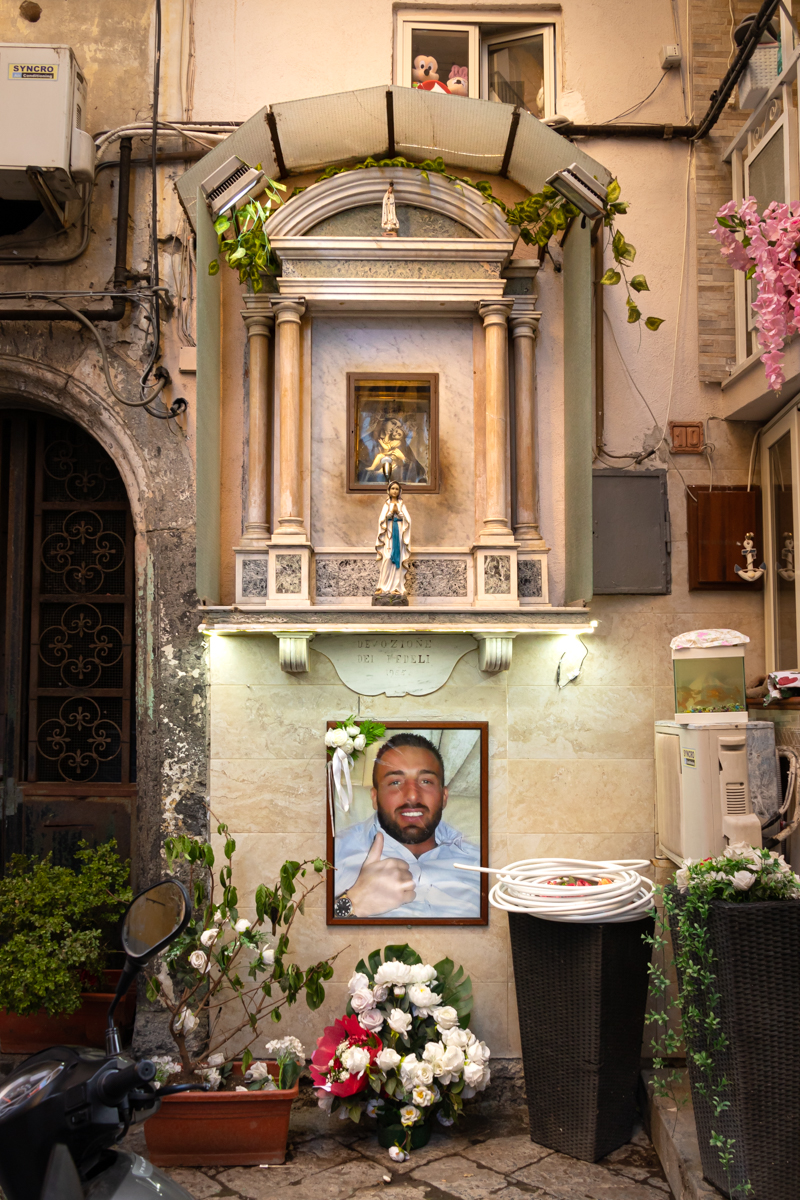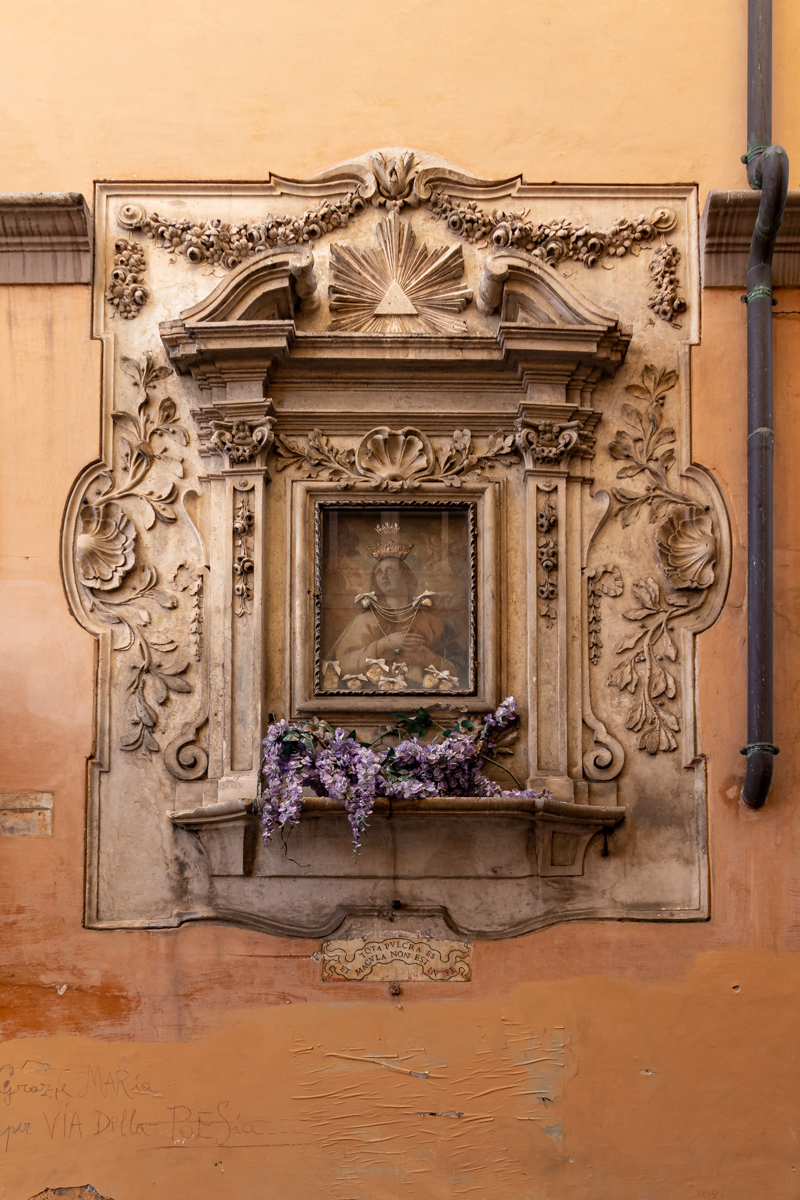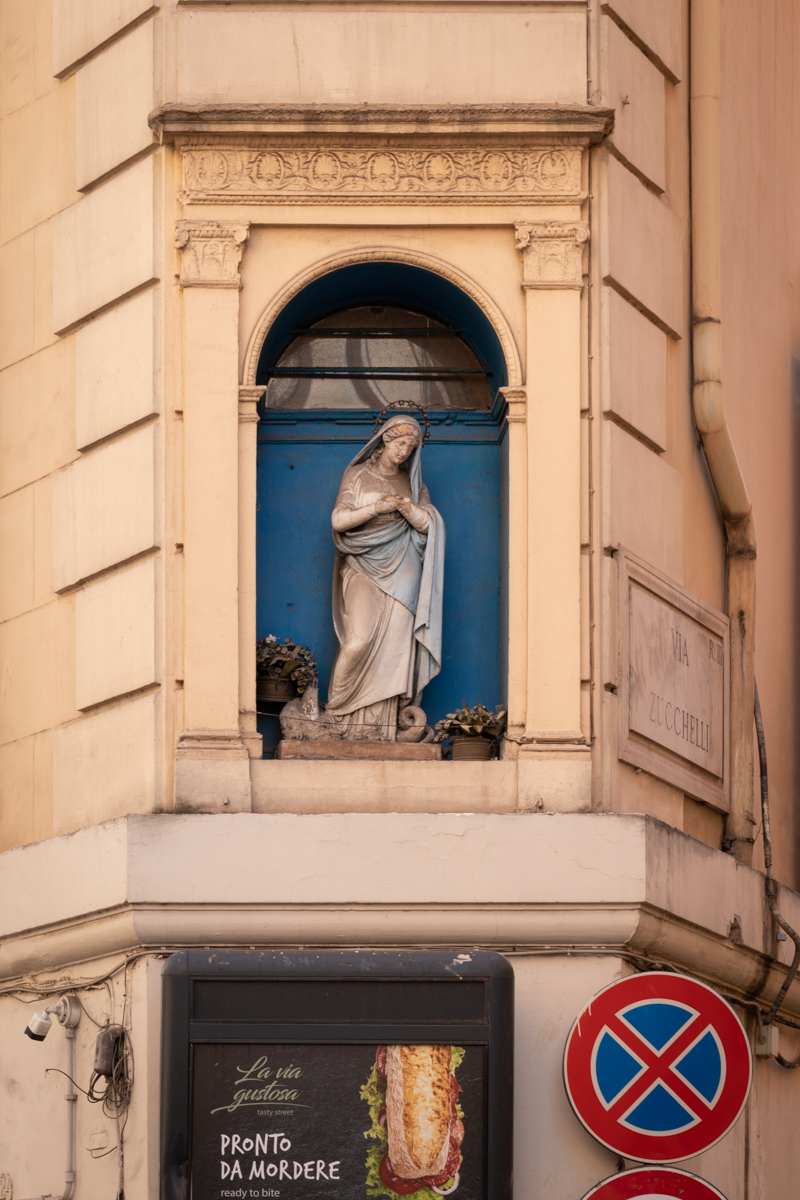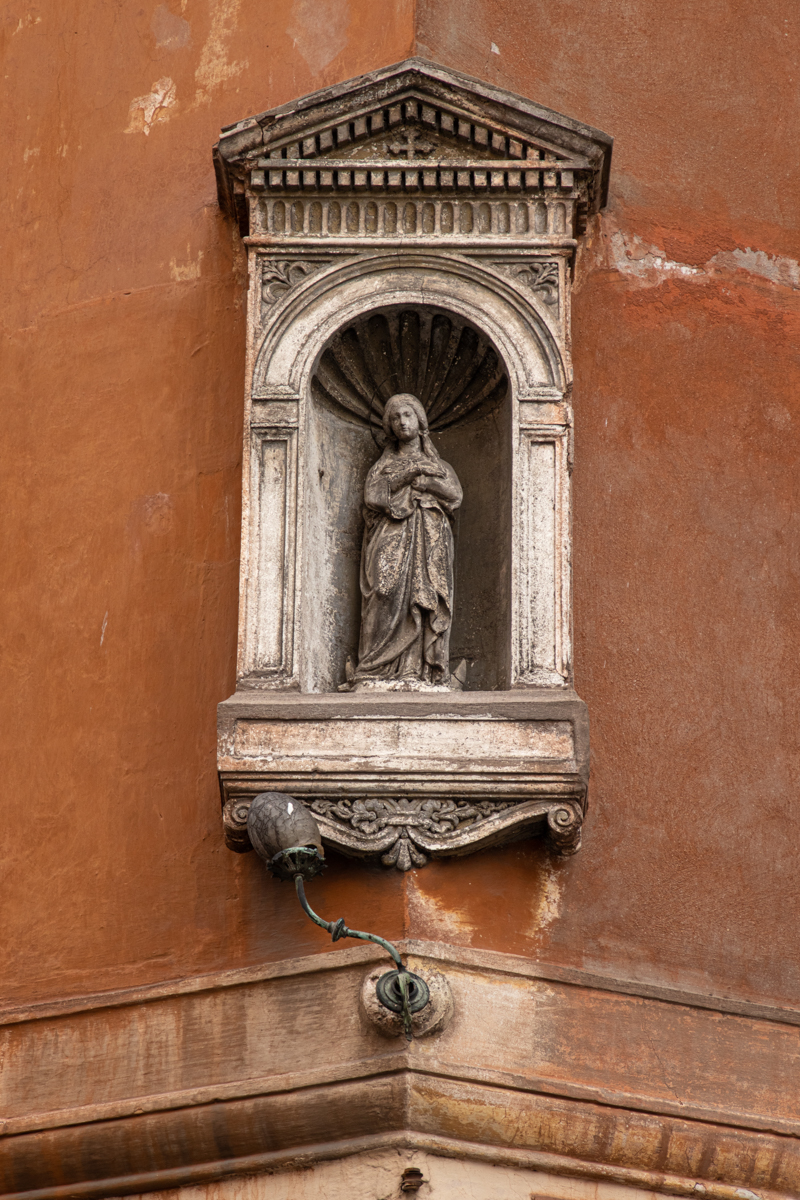aedicule: n. small structures used as shrines
(from L. aedicula 'temple, abode, house)
I admit to having become more than slightly obsessed with finding and photographing street shrines while travelling through Italy in 2022. I’d seen them on previous trips of course; they are everywhere, and possibly so common that you don’t ‘see’ them after a while. I came back with over 450 photos of aedicule, so exquisite in their diversity, their history, their cultural significance. They embody the most eternal and common aspects of our everyday existence. They speak of what it is to be human, to love, to lose, to have faith or fear. To have hope.
I found a pronounced difference in the character of the aedicule from locations ranging from from the north to the south of Italy in this collection. For example, Venice’s aedicule (locally called capiteli or edicole votive/sacre) were weathered and aged by the lagoon climate, their battle with the elements as evident as that of La Serenissima herself, and most commonly located in wall niches of dwellings or buildings. Naples’ shrines (edicole votive/sacre) were extroverted, even exuberant, more often at street level, and had obvious signs of ongoing use - more flowers, more lights, integration into everyday goings on - and ranged in size from intimately tiny to imposing two storey edifices. On the other hand, the simple oval Roman shrines (madonnelle) that I usually found mounted higher on the corners of buildings well above the to and fro of the busy capital by and large seemed prim and austere, their elevated position and the presence of the Madonna almost conferring a kind of watchfulness, a spiritual CCTV.
Aediculae are cared for and maintained by the community around the area where they have been placed. Those I encountered range in age from the 16th century to the present. They are not generally considered serious works of art or architecture but may have immense value, significance, and history within those communities. There’s a wide stylistic diversity in the shrines ranging from works of art by quite well-known artists to simpler folk art pieces.
In Naples, where a more vibrant spirituality exists within the Catholic practice, there’s often a ‘purgatorio’ below the main shrine in which photos of loved ones may be placed amongst figurines of naked anime (souls) writhing in the cleansing fires. The idea is that as one passes by one prays for the souls of the departed and requests intervention from the Madonna, or perhaps the more heavy-duty saints, to help cleanse those souls and speed their progress to heaven.
There’s a reasonable amount of information about the history and development of Neopolitan aedicule to be found online but not so much about the other locations featured here.
I wasn’t quite sure what I would do with the original photos, numbering over a thousand, and taken over the course of two years, but as I worked through them an evolving aesthetic assisted with choosing those on display here. Some are beautiful, some beautifully ugly, and some I think I might even dislike in various ways when viewed individually. But when I look at them all lined up in my gallery they seem like exquisite miniatures, precious jewels, tiny enamels, and all are unique.
This ongoing project became a journey of deliberate off-course wandering from one place to the next, just in case there was a treasure down that alley, or around the next corner, or maybe even the one after that.
There almost always was.





























